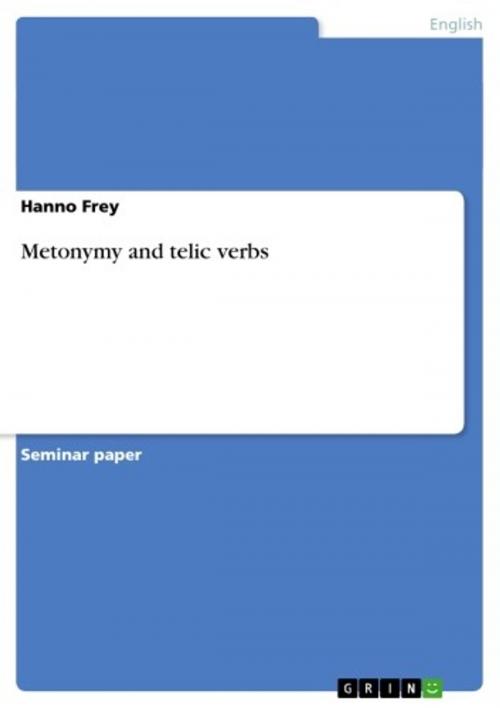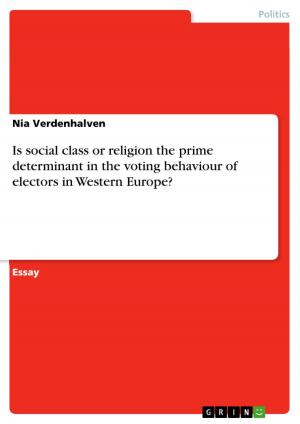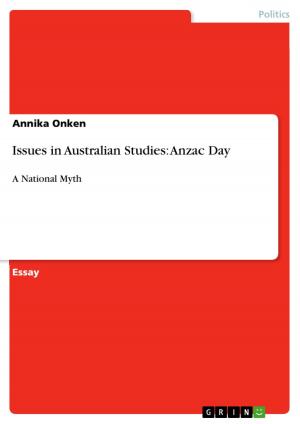| Author: | Hanno Frey | ISBN: | 9783638212571 |
| Publisher: | GRIN Publishing | Publication: | August 26, 2003 |
| Imprint: | GRIN Publishing | Language: | English |
| Author: | Hanno Frey |
| ISBN: | 9783638212571 |
| Publisher: | GRIN Publishing |
| Publication: | August 26, 2003 |
| Imprint: | GRIN Publishing |
| Language: | English |
Seminar paper from the year 2002 in the subject English Language and Literature Studies - Linguistics, grade: 1,3 (A), University of Hamburg (Anglistics Seminar), course: Seminar II: Cognitive English Grammar, 7 entries in the bibliography, language: English, abstract: For centuries, the study of metonymy and metaphor has been regarded purely a matter of style and rhetoric. In addition to that, research into metonymic relationship traditionally has been put only second to the phenomenon of metaphor. However, things have changed a little over the past decades. Especially after Lakoff/ Johnson had published their influential work on metaphor and conceptualization ('Metaphors we live by', 1980) research into cognitive aspects of language gained more ground in linguistics. Deeper insight into the way we structure our perception of the world has led to the conclusion that both, metaphor and metonymy, must be regarded as cognitive phenomena. As such they illustrate the fact that 'fundamental cognitive abilities and experientially derived cognitive models have direct and pervasive linguistic manifestations' (Langacker, 1993, p.1) and, conversely, that by ways of examining language we can analyse important aspects of the way our mind is structured. As for metonymy, the relationship between thought and language is characterised by the fact that 'an expression that normally designs one entity is used instead to designate another, associated entity' (Langacker, 1993, p. 29). Crucial questions which spring from this assumption are: How and why do we understand metonymies? Which principles are involved in the process of creating and understanding metonymic expressions and why can we rely on them?1 In the following, I will answer these questions on the basis of Ronald W. Langacker´s essay 'Reference-point Construction' (Langacker, 1993). I will apply Langacker´s theoretical notions to a rather specific area of language: telic verbs. By way of referring to a selection of telic verbs I will argue that the understanding of telic verbs relies on metonymy- a metonymy that is not included in the lists of metonymies developed by some well-known linguists (cf.: Fass, 1997, 461-469). The contents of my term paper is structured in three parts: First of all, I am going to exemplify Langacker´s theory about metonymic expressions. In a second step I will point out important characteristics of telic verbs. Finally, I will exemplify how the process of understanding telic verbs can be explained in terms of Langacker´s theory.
Seminar paper from the year 2002 in the subject English Language and Literature Studies - Linguistics, grade: 1,3 (A), University of Hamburg (Anglistics Seminar), course: Seminar II: Cognitive English Grammar, 7 entries in the bibliography, language: English, abstract: For centuries, the study of metonymy and metaphor has been regarded purely a matter of style and rhetoric. In addition to that, research into metonymic relationship traditionally has been put only second to the phenomenon of metaphor. However, things have changed a little over the past decades. Especially after Lakoff/ Johnson had published their influential work on metaphor and conceptualization ('Metaphors we live by', 1980) research into cognitive aspects of language gained more ground in linguistics. Deeper insight into the way we structure our perception of the world has led to the conclusion that both, metaphor and metonymy, must be regarded as cognitive phenomena. As such they illustrate the fact that 'fundamental cognitive abilities and experientially derived cognitive models have direct and pervasive linguistic manifestations' (Langacker, 1993, p.1) and, conversely, that by ways of examining language we can analyse important aspects of the way our mind is structured. As for metonymy, the relationship between thought and language is characterised by the fact that 'an expression that normally designs one entity is used instead to designate another, associated entity' (Langacker, 1993, p. 29). Crucial questions which spring from this assumption are: How and why do we understand metonymies? Which principles are involved in the process of creating and understanding metonymic expressions and why can we rely on them?1 In the following, I will answer these questions on the basis of Ronald W. Langacker´s essay 'Reference-point Construction' (Langacker, 1993). I will apply Langacker´s theoretical notions to a rather specific area of language: telic verbs. By way of referring to a selection of telic verbs I will argue that the understanding of telic verbs relies on metonymy- a metonymy that is not included in the lists of metonymies developed by some well-known linguists (cf.: Fass, 1997, 461-469). The contents of my term paper is structured in three parts: First of all, I am going to exemplify Langacker´s theory about metonymic expressions. In a second step I will point out important characteristics of telic verbs. Finally, I will exemplify how the process of understanding telic verbs can be explained in terms of Langacker´s theory.















